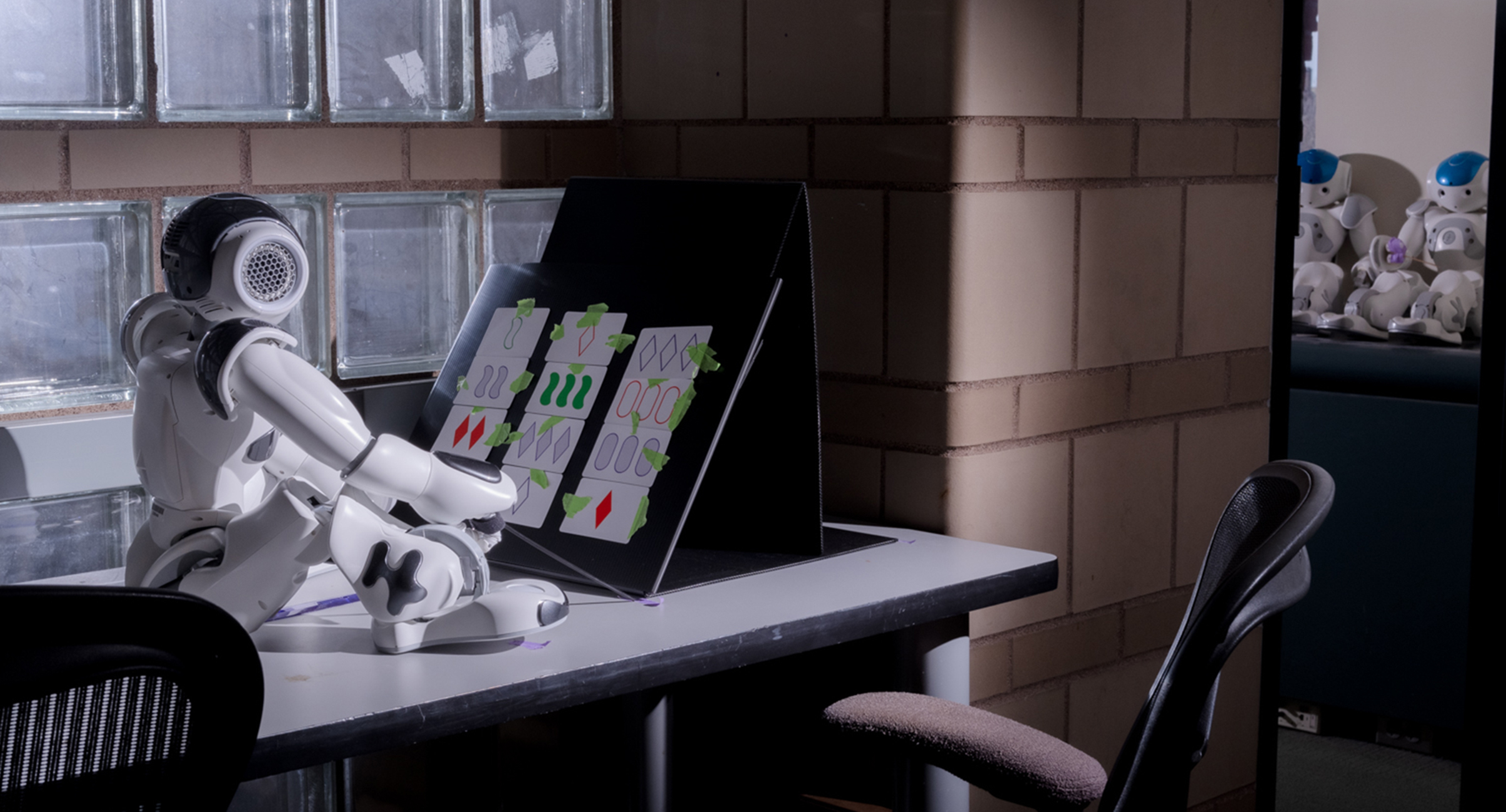Brian Scassellati: Social engagement through robotics
This story originally appeared in the 2024 edition of Yale Engineering Magazine.This story originally appeared in the 2024 edition of Yale Engineering Magazine.
With an oven, a coffee maker and fridge, the far side of Danny Rakita’s lab on the third floor of A.K. Watson Hall looks a lot like any workplace break room. Here, though, robots will be doing the meal preparations.
It’s part of Rakita’s effort to program robots to become accustomed to helping out in home care settings.
“We want to make deploying kinds of devices a lot more effective in the real world,” said Rakita, assistant professor of computer science.
Walk upstairs to the lab of Marynel Vázquez and you’ll see a device that she’s programming to help make pizza, as part of a robot-human cooking team. She’s developing ways for robots and humans to work together naturally, attuned to the sort of nuances that come with any seasoned partnership — where all parties are able to pick up on each other’s cues, like tone of voice or facial expressions.
“One of the things that drives a lot of our work is advancing how robots make sense of the social world that they’re in,” said Vázquez, assistant professor of computer science.
The number of roboticists in the School has more than doubled in recent years, and Rakita and Vazquez are just two of the faculty driving the new Engineering initiative known as Robotics for Humanity. As the field of robotics is poised to make an impact on modern life as pervasive and revolutionary as computers did a few decades ago, Yale Engineering is working to help integrate them seamlessly and beneficially into the home, the workplace, in healthcare and other aspects of our lives.
The Robotics labs are already immersed in interdisciplinary collaborations both within the School as well as with Law, Psychology, Medicine, Environment, Architecture, Management, and the Humanities, making Yale uniquely positioned to take on essential human challenges.
The School and the University are investing both resources and space in robotics helping to cement Yale as a leader in Robotics, enhance on-campus visibility and create a “must visit” space for students and visitors. Here’s a look at roboticist Brian Scassellati, and some of the groundbreaking work that’s happening in his lab:
Brian Scassellati: Social engagement through robotics
Human behavior has been studied from many perspectives and at many scales. Psychology, sociology, anthropology, and neuroscience each use different methodologies, scope, and evaluation criteria to understand aspects of human behavior. Brian Scassellati uses computer science, and robotics in particular, to provide a complementary perspective on the study of human behavior. His research focuses on building embodied computational models of human social behavior, especially the developmental progression of early social skills.

“Even though they have a serious amount of engineering and computational effort behind them, these robots have real impacts on real people in the real world — in schools, in hospitals, in malls, and on the streets.
Brian Scassellati
A. Bartlett Giamatti Professor of Computer Science and Mechanical Engineering
“Social engagement is critical to functional intelligence,” said Scassellati, the A. Bartlett Giamatti Professor of Computer Science and Mechanical Engineering & Materials Science.
His work uses computational modeling and socially interactive robots to explore questions about social development. To do so, his research team takes on the considerable challenges in building interactive robots. As robots move out of controlled settings and into the settings of everyday life, there is a critical need to engage untrained users in ways that are comfortable and natural. Scassellati and his team are providing a structured approach to constructing robotic systems that elicit and respond to the natural behaviors of people.
“Even though they have a serious amount of engineering and computational effort behind them, these robots have real impacts on real people in the real world — in schools, in hospitals, in malls, and on the streets,” Scassellati said.
More Details
Published Date
Mar 30, 2024


